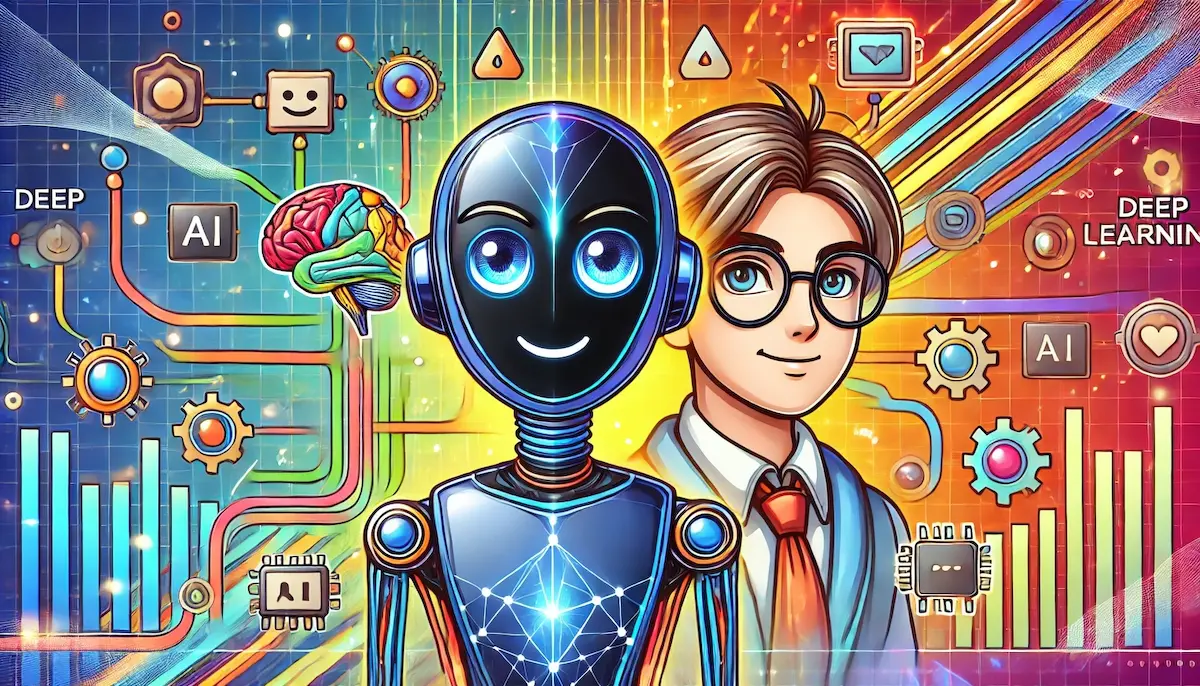Deep learning, a subset of artificial intelligence (AI) and machine learning (ML), is transforming the way we process data and build intelligent systems. By mimicking the human brain’s neural networks, deep learning algorithms can analyze large datasets, recognize patterns, and make decisions with unprecedented accuracy. Let’s explore what deep learning is, how it works, and its impact on various industries.
What is Deep Learning?
Deep learning is a type of machine learning that uses neural networks with multiple layers (hence “deep”) to model complex patterns in data. These networks are designed to automatically learn and improve from experience without being explicitly programmed. Deep learning excels at tasks such as image and speech recognition, natural language processing, and even playing complex games.
How Does Deep Learning Work?
Neural Networks
The foundation of deep learning is the artificial neural network, inspired by the biological neural networks in the human brain. A neural network consists of layers of interconnected nodes (neurons), where each connection has a weight that adjusts as learning progresses.
- Input Layer: The first layer that receives the raw data.
- Hidden Layers: Intermediate layers that process the input data through weighted connections. These layers perform transformations and extract features from the data.
- Output Layer: The final layer that produces the output or prediction based on the transformations performed by the hidden layers.
Training and Learning
Training a deep learning model involves feeding it large amounts of labeled data and adjusting the weights of the connections to minimize the difference between the predicted output and the actual result. This process is called backpropagation, where the error is propagated backward through the network to update the weights.
- Forward Pass: The input data is passed through the network, layer by layer, to generate an output.
- Loss Calculation: The output is compared to the actual result to calculate the loss or error.
- Backpropagation: The error is propagated back through the network to update the weights using optimization algorithms like gradient descent.
- Iteration: This process is repeated for many iterations (epochs) until the model achieves the desired level of accuracy.
Activation Functions
Activation functions introduce non-linearity into the neural network, enabling it to learn and represent complex patterns. Common activation functions include:
- Sigmoid: Outputs values between 0 and 1, often used in binary classification problems.
- ReLU (Rectified Linear Unit): Outputs the input if positive, otherwise zero, helping to mitigate the vanishing gradient problem.
- Tanh: Outputs values between -1 and 1, used in tasks where data is centered around zero.
Applications of Deep Learning
Image and Video Recognition
Deep learning models, particularly convolutional neural networks (CNNs), are highly effective at recognizing objects, faces, and scenes in images and videos. Applications include facial recognition, autonomous vehicles, and medical imaging diagnostics.
Natural Language Processing (NLP)
Deep learning has significantly advanced NLP, enabling machines to understand, interpret, and generate human language. Applications include machine translation, sentiment analysis, chatbots, and voice assistants like Siri and Alexa.
Speech Recognition
Deep learning models can transcribe spoken language into text with high accuracy. This technology powers voice-activated assistants, transcription services, and accessibility tools for individuals with hearing impairments.
Autonomous Vehicles
Deep learning is a key technology behind self-driving cars, enabling them to perceive and interpret their environment, make decisions, and navigate safely. It processes data from cameras, LiDAR, radar, and other sensors to control the vehicle.
Healthcare
In healthcare, deep learning is used for disease detection, diagnosis, and treatment planning. Models can analyze medical images to identify abnormalities, predict patient outcomes, and personalize treatment plans.
Financial Services
Deep learning models help detect fraud, assess credit risk, and automate trading strategies in the financial sector. They can analyze large volumes of financial data to identify patterns and make predictions.
Gaming and Entertainment
Deep learning has revolutionized gaming by enabling more realistic graphics, intelligent NPCs (non-player characters), and procedural content generation. It is also used in film production for tasks like motion capture and special effects.
Benefits of Deep Learning
Accuracy
Deep learning models often achieve higher accuracy than traditional machine learning models, especially in tasks involving large, complex datasets. Their ability to learn hierarchical representations makes them particularly effective at pattern recognition.
Automation
Deep learning can automate tasks that previously required human intervention, leading to increased efficiency and cost savings. This automation extends to data processing, feature extraction, and decision-making.
Scalability
Deep learning models can scale to handle massive datasets, making them suitable for big data applications. As computational power and data availability continue to grow, deep learning models become more powerful and capable.
Continuous Improvement
Deep learning models can continuously learn and improve from new data, making them adaptable to changing conditions and evolving requirements. This self-improving capability ensures that models remain relevant and effective over time.
Challenges and Future Outlook
Data Requirements
Deep learning models require large amounts of labeled data for training, which can be challenging and expensive to obtain. Developing techniques for training with less data or using unsupervised learning is an active area of research.
Computational Resources
Training deep learning models is computationally intensive, requiring significant processing power and memory. Access to high-performance hardware, such as GPUs and TPUs, is essential for effective deep learning.
Interpretability
Deep learning models are often seen as “black boxes” due to their complexity, making it difficult to understand how they arrive at their decisions. Improving model interpretability and transparency is crucial for building trust and accountability.
Ethical Considerations
The deployment of deep learning models raises ethical concerns, including bias, privacy, and security. Ensuring that models are fair, unbiased, and secure is critical for responsible AI development and deployment.
Conclusion
Deep learning is a transformative technology with the potential to revolutionize various industries. As research progresses and technology advances, deep learning will continue to unlock new possibilities and drive innovation. Embracing this technology while addressing its challenges will be key to harnessing its full potential.
Blockfine thanks you for reading and hopes you found this article helpful.
